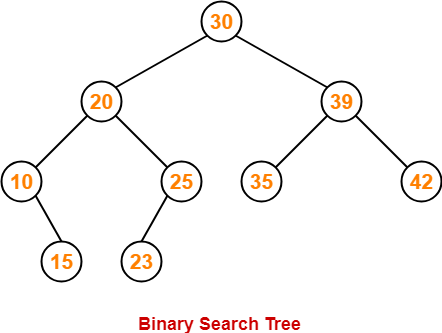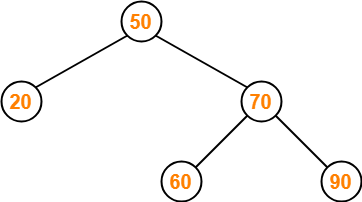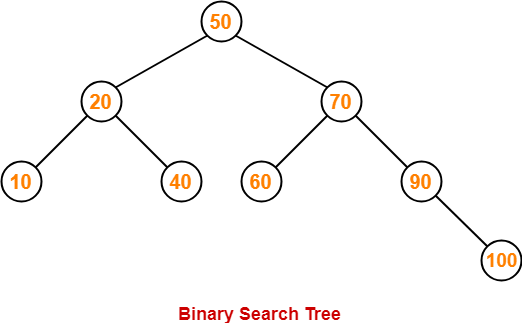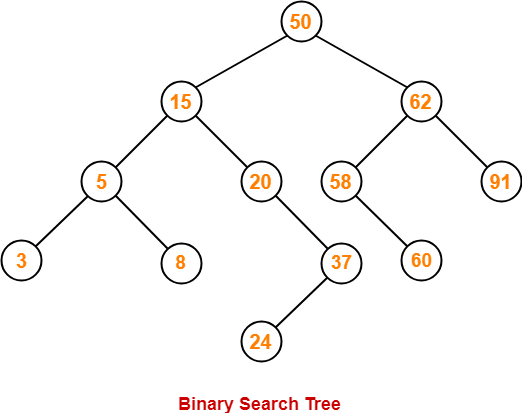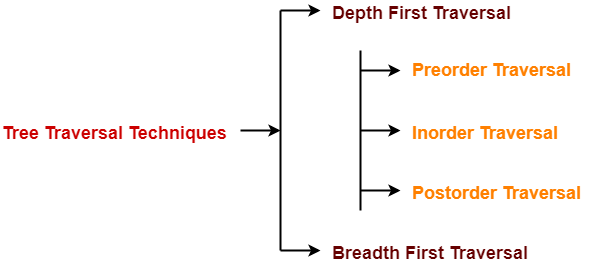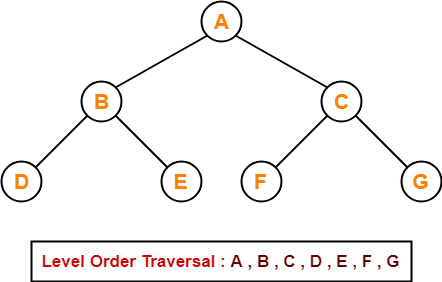AVL Tree-
- AVL trees are special kind of binary search trees.
- In AVL trees, height of left subtree and right subtree of every node differs by at most one.
- AVL trees are also called as self-balancing binary search trees.
Also Read- Binary Search Trees
Example-
Following tree is an example of AVL tree-

This tree is an AVL tree because-
- It is a binary search tree.
- The difference between height of left subtree and right subtree of every node is at most one.
Following tree is not an example of AVL Tree-

This tree is not an AVL tree because-
- The difference between height of left subtree and right subtree of root node = 4 – 2 = 2.
- This difference is greater than one.
Balance Factor-
In AVL tree,
- Balance factor is defined for every node.
- Balance factor of a node = Height of its left subtree – Height of its right subtree
| In AVL tree,
Balance factor of every node is either 0 or 1 or -1. |
AVL Tree Operations-
Like BST Operations, commonly performed operations on AVL tree are-
- Search Operation
- Insertion Operation
- Deletion Operation
Also Read- Insertion in AVL Tree
After performing any operation on AVL tree, the balance factor of each node is checked.
There are following two cases possible-
Case-01:
- After the operation, the balance factor of each node is either 0 or 1 or -1.
- In this case, the AVL tree is considered to be balanced.
- The operation is concluded.
Case-02:
- After the operation, the balance factor of at least one node is not 0 or 1 or -1.
- In this case, the AVL tree is considered to be imbalanced.
- Rotations are then performed to balance the tree.
AVL Tree Rotations-
| Rotation is the process of moving the nodes to make tree balanced. |
Kinds of Rotations-
There are 4 kinds of rotations possible in AVL Trees-

- Left Rotation (LL Rotation)
- Right Rotation (RR Rotation)
- Left-Right Rotation (LR Rotation)
- Right-Left Rotation (RL Rotation)
Cases Of Imbalance And Their Balancing Using Rotation Operations-
Case-01:

Case-02:

Case-03:

Case-04:

To gain better understanding about AVL Trees and Rotations,
Download Handwritten Notes Here-
Next Article- AVL Tree Properties
Get more notes and other study material of Data Structures.
Watch video lectures by visiting our YouTube channel LearnVidFun.



